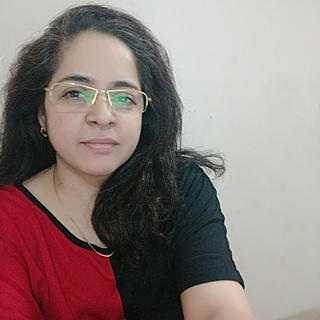To eat like your Nani/ Dadi first learn to live disciplined like them!
- Bhavna Malhotra
- Nov 20, 2018
- 3 min read
In fashion industry they say never throw your old clothes as you never know when they’ll be in trend again! Looks like nutrition advice is also following its footsteps! These days eating like your Nani/ Dadi is a popular advice given by nutrition/ fitness experts. In essence ‘don’t throw your traditional eating habits’! Let’s weigh its pros and cons before diving straight back into our ghee and ladoos. Wearing my old bell bottoms without thinking might make me look funny but eating without thought can make me sick.
Let’s first go back to the lifestyle of our grannies. There was no TV, laptop or smartphone. So our grannies were not watching daily soaps or spending hours on what’s app. They were moving more than most of us. Kitchen work meant using a mortar and pestle, kneading the dough with hand (not in processor) and grinding masalas and chutnies with hand. Since there was no TV, dinner times were not coordinated with the 9.00 pm serial or news. Dinners were early and without any distractions. So even after having a meal with rice/ chapatti with ghee there was enough time post dinner for the body to digest that meal. Now with late dinners which are mostly prepared by house help or swiggyed can we really justify a pile of rice and ghee. I am in no way advocating a continental alien meal. Can’t we just have a smaller portion of low glycaemic index Indian meal with chapatti/ bhakri with veg and dal instead? We can always enjoy the rice for lunch!! And yes, if you eat your dinner at 7.00 pm please do have rice and Ghee!
Sweets have always been a part of our culture. Chikkis, halwas, kheer, puran poli and the endless variety of home made ladoos. So they are a part of our tradition and our grannies had these and were healthier than us right! Let’s again take a step back and ask our grannies the very important question – how often were the sweets made at home? You’ll be surprised to hear the answer – Mostly on festivals or special occasions. Since the families were big there was no free access to tup and sugar. When these were made portion control automatically happened as it was shared with a big family. With the increase in disposable incomes we don’t think twice before using ghee or sugar. So if I start having sweets daily with my desk job will it not clog my arteries? I am not advocating artificial sweeteners or low sugar biscuits. I am asking you to be more mindful of your sweet intake. Festivals, special occasions do enjoy your ladoos but don’t have them frequently just because they are traditional!

Indian diet has always been varied and complete. In different regions of our country fruits, vegetables, grains, pulses/ legumes and dairy have been integral parts of the diets. Preparations and combinations might be different but our plates have always been colourful and complete. Our breakfast options have mostly grains in the form of poha/ idli/ dosa/ paratha etc. Usually a glass of taak/ milk or a bowl of curd is taken along which gets in the good quality protein too. Lunch and dinner plates have a balance of roti/ rice (grains), dal/ usal (pulses/ legumes for protein), veg and salad in some form – either a koshambir or a veg raita. Pickles and chutnies not only tickle the taste buds but also help in digestion. So yes, our traditional Indian eating pattern is good for our health. We just need to be more active and mindful of our eating habits!









Comments